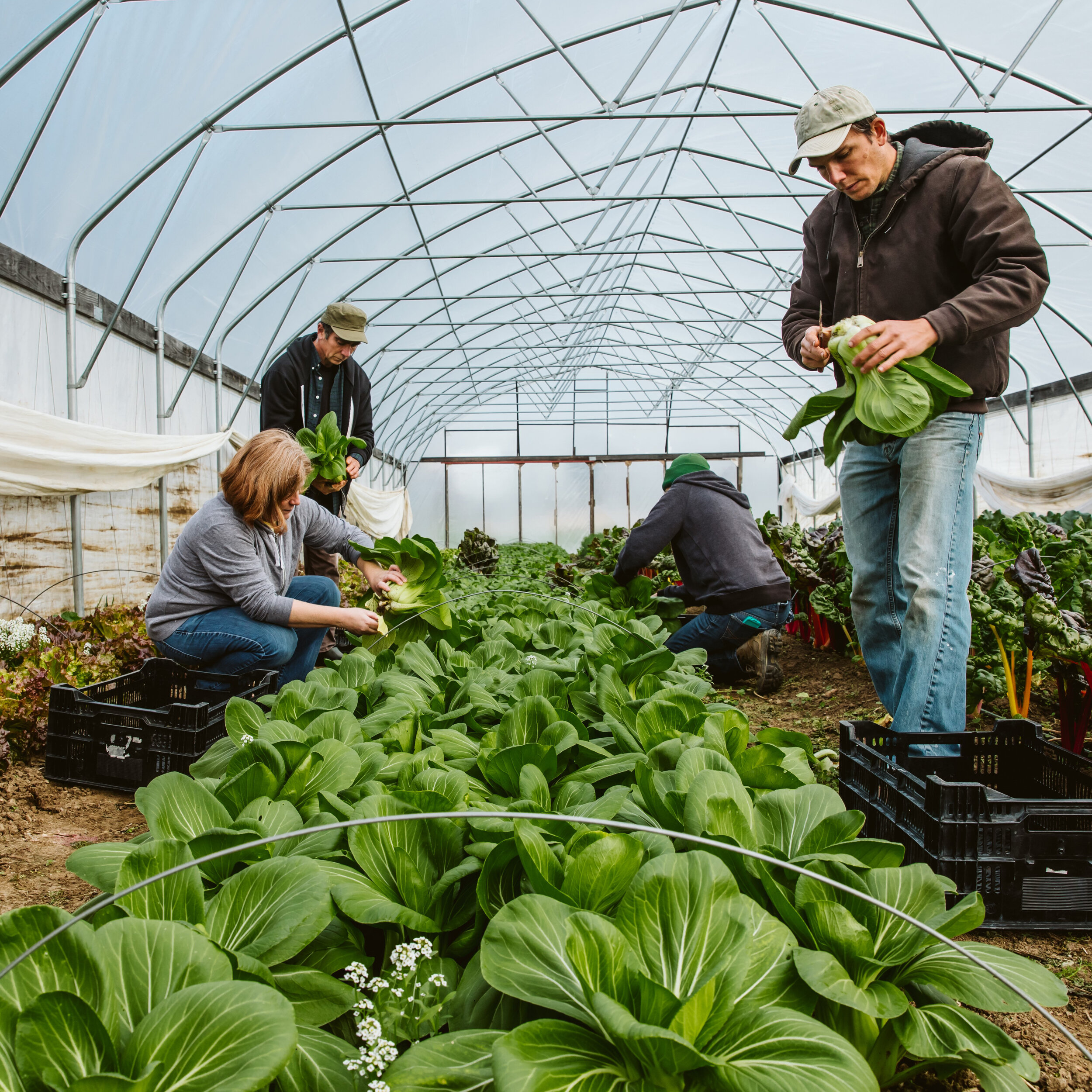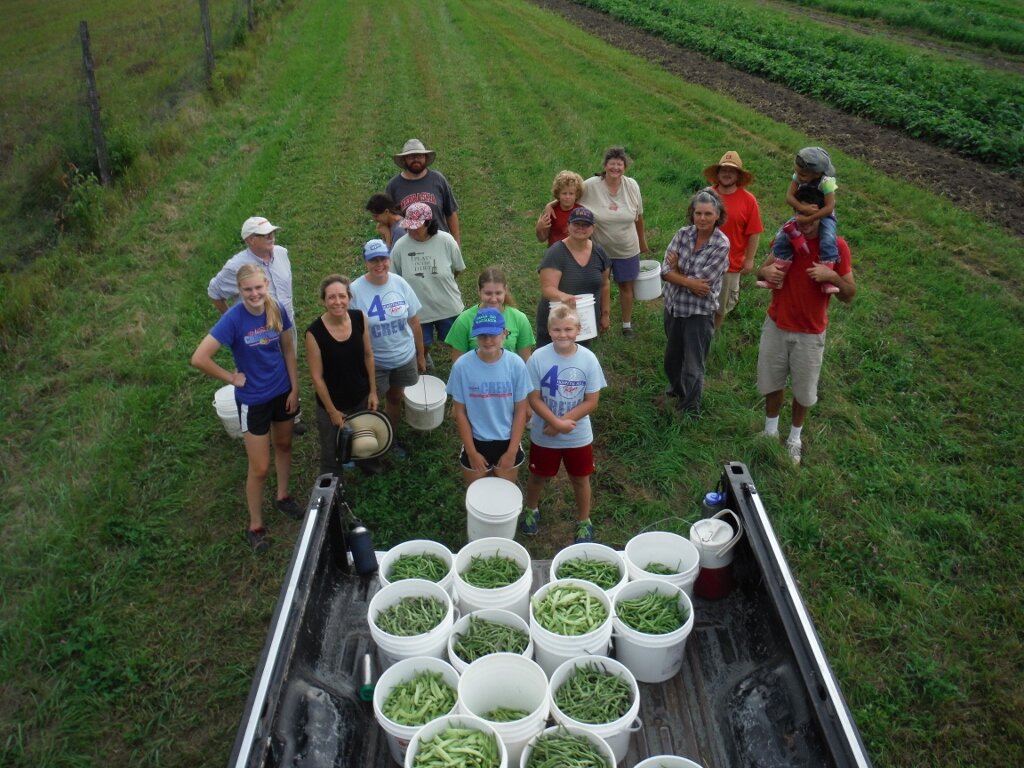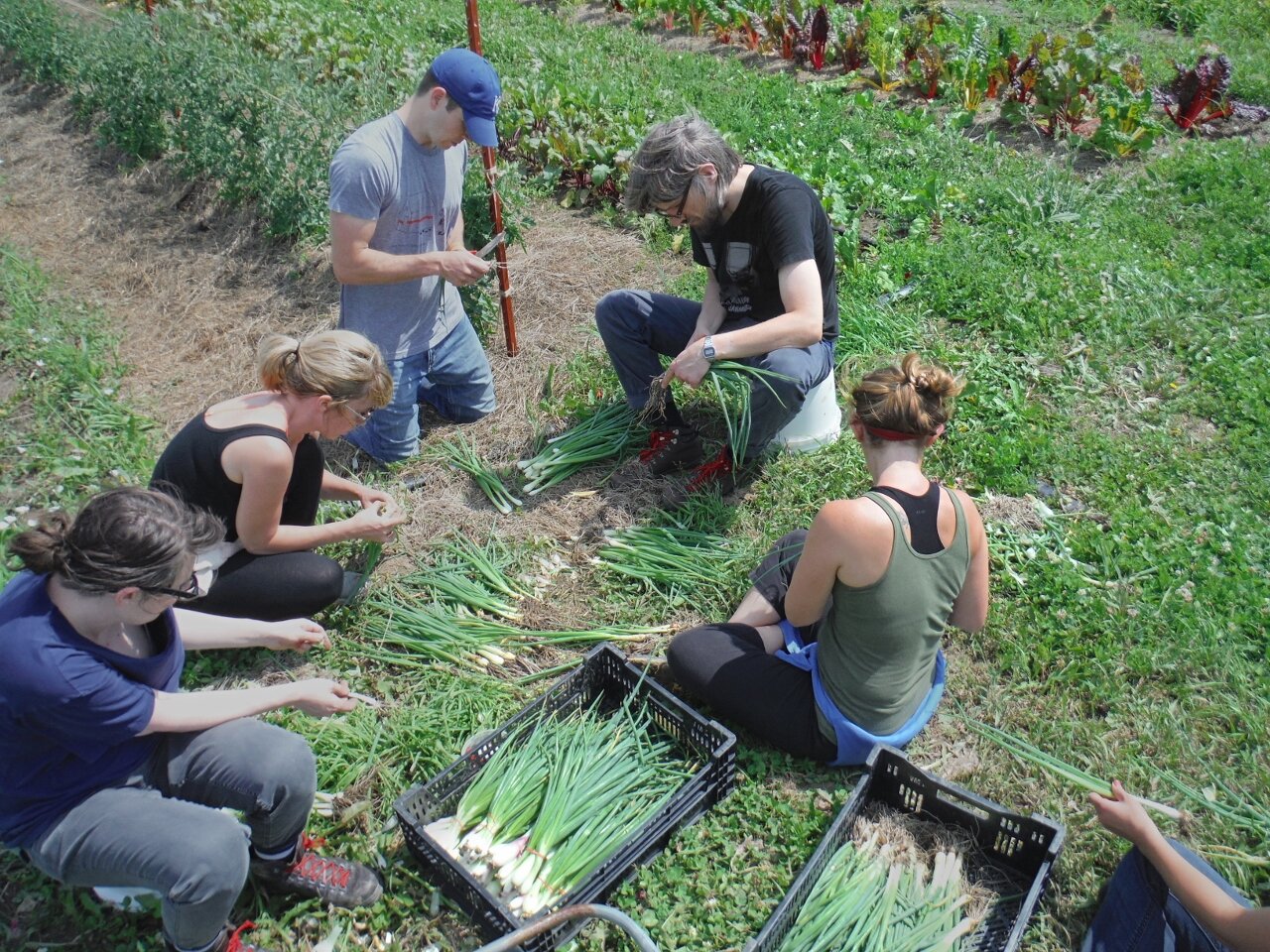Feed the Soil, Feed the People: This Kansas City farm fosters community through all-natural methods
By Nicole Newman // Photos courtesy of Tom Ruggieri, Fair Share Farms
“With synthetic fertilizers, it’s just a dead chemical that is just being poured on the plant. In order to create a healthy plant, you have to feed the soil. Especially with cover crops. We’ll grow a cover crop that could be as tall as a person when it’s reached maturity, then we mow it down and let the soil digest it. It’s just the natural system of life on earth.”
Tom Ruggieri and Rebecca Graff began Fair Share Farms in 2003 with two goals: to give back to the soil through sustainable farming practices and to foster a community where individuals of all ages can help grow their own food and keep their dollars local. They’ve proved that dead soil can be made resilient with the proper care. They’ve been persistent with their biological farming process. They’ve perfected recipes for ferments that are 95% homegrown. They’ve welcomed and taught community members with open arms. And after 17 years, Fair Share Farms, is as strong as ever.
tasteMAKERS brand manager Nicole Newman checked in with Ruggieri to learn more about the farm’s evolution, the natural processes they use daily and their CSA.
Nicole Newman: Your farm started in 2003. Could you tell me more about how you got started farming? Why did you and Rebecca choose to leave your jobs and build this farm?
Tom Ruggieri: Rebecca is the person who had the vision for the farm. We are on her family’s land. She was working in San Francisco and the house where she was living got a CSA share. She did some research; got a newsletter with details. She was ready to get out of the city. She went out near Rochester, NY, and started apprenticing under Elizabeth Henderson of Peace Work. I was actually a member of her CSA. We met and realized we were two Mid-Westerners both looking to do something constructive with our life. Positive. Community and food oriented. And now we are in our 17th year!
NN: The farm is located on Rebecca’s family’s land. What role does family play in your farming? What was the land being used for before you began Fair Share Farms?
TR: Right before the farm started, it was rented to local farmers for pasture and commodity crops. Rebecca’s father still lived in town and managed that. We rented about 20 acres (out of 200+ acres) and rebuilt the farm. There was a house to move into and a farm to fix up. A tractor that was Rebecca’s grandfather’s. Things we had to clean up and modernize. Her father was extremely helpful. Her grandparents owned it before him, and it was founded by her great grandparents in the ‘30s. It’s four-generations of farming.
NN: How did you learn how to use biological farming practices? Was it just a bunch of research, and then trial and error? Did you consult an expert?
TR: It was a combination of all that. At Peace Work, they were an organic farm. Liz [Henderson] was on the National Organic Standards Board back in the day. In the Northeast, they’ve been working on organic farming for a long, long time. We were in a good place to learn. I was an environmental engineer, which involves a lot of biology. … The whole idea that there was this biological system in the soil was an idea I could grasp pretty quickly. I didn’t have to see it. I understood the power of biology in the soil. It was dead and took a long time to bring it back to life.
NN: What impact does soil health have on a farm? Why focus on that?
TR: Part of it is that you’re growing a plant, you want life. If you have life in your soil that life will be transferred to your plant. With cover cropping and mulching, we increase the carbon matter in the soil. Carbon sequestering is important in relation to global warming. Over the years we’ve measured the carbon in our soil, and it’s gone up, meaning we’ve taken carbon from the air while producing healthy plants. It’s helping the environment.
The other part of it is diversity. We actually plant in strips and put in flowering plants and that’ll bring in beneficial insects. We’ll build up a population of beneficials. That’s what we are trying to encourage on the farm. One thing they can do is be predators to pests to the plants. Many are very small, like predatory wasps, who lay their eggs in other insects and when the eggs hatch, they will eat the insect and keep the population of the pests down. They also help with pollination.
NN: We touched on this already. But let’s dive deeper. The farm’s motto is “feed the soil, feed the people.” What does that mean to you?
TR: With synthetic fertilizers, it’s just a dead chemical that is just being poured on the plant. In order to create a healthy plant, you have to feed the soil. Especially with cover crops. We’ll grow a cover crop that could be as tall as a person when it’s reached maturity, then we mow it down and let the soil digest it. It’s just the natural system of life on earth. We chew it and disest it and that’s how we get our ingredients. And with feeding the soil, you have microorganisms and bugs in there. One thing that’s in there is lacto-bacillus which helps with fermenting. For us, it’s neat to know that life in our soil when we do fermenting actually becomes the life that helps us digest food in our own bodies. Rebecca and I feel that we are very connected to the land in that way.
NN: You run a CSA. Why is it important for people to subscribe to CSAs?
TR: Well, there’s different ways of looking at it. Our end, as a farmer, CSAs are helpful. Members subscribe to the farm, they pay some of all of their money upfront. In January or February, farmers have a lot of expenses, so it helps to have that cash flow up front. Our CSA is a participatory CSA. … It helps consumers be literally connected to the ground that their produce is being grown. Some of our members, we have three generations come out at once when they come to help, and others who have been with us all 17 years. It helps people get a better understating to know how food is raised. When kids come out, it’s a great way to introduce how food is grown.
NN: There are a few ways to participate in your CSA. People can help on the farm or participate in Core Group, which is the decision making group. Would you mind telling us more about each of those?
TR: Every member is required to participate in one way or another. One method is Core Group, the sounding board for us. It’s a way to get feedback from the members. In the past, they’ve had different responsibilities including coordinating work shifts, planning social events and surveying members.
With distribution, we have three or four distribution sites and each one has captains. They set up, make sure everything goes well, and put it all away at the end of distribution.
And then, if you’re not doing one of those things, you have to come out once a year to help with harvest. With COVID, there’s more of a labor load on the farm now because we get so much help from the CSA. A typical Saturday morning, you might have members helping pick beans, pick peas, mulch. Something that takes two people a long time but in a group, it goes pretty quickly. Our members have been understanding so far and are hoping some day they can return to the farm.
NN: Community members who volunteer on the farm volunteer on Saturday mornings. Tell me about the atmosphere on Saturday mornings. How does it differ from other days on the farm?
TR: It’s always a little bit different. You never know what the weather will be. We start the work shifts in April and end in November, so there’s all sorts of weather possibilities and you never know what we might be doing. People are always happy to be helping. They look forward for the opportunity to get out of the city, be on the farm and help out. It’s pretty neat to see members who have been around since 2004 and are still coming out. It’s a real community; it really comes through.
NN: When did you add ferments to your list of offerings? How did you learn how to do it?
TR: When Rebecca and I met, we put together a farm plan and took a holistic look at everything. We looked at what we envisioned. I really liked to cook and I reserved some of the stuff to use at home. I didn’t want to create tomato sauce or boil water or do those things that take a lot of time. So we decided that ferments would be a good way to go. Fermentation happens at room temperature. The whole thing really fit well into the idea of not increasing the amount of energy that we would be expending on the farm. There’s a structure and approach to what we are doing.
NN: Tell me about your recipes. How are your ferments unique?
TR: … We raise 95% of what goes in the jar. We buy ancient sea salt, organic paprika and organic ginger. Other than that, we grow everything that goes in the jar. We look year after year to find the varieties that go in the jar. We’re growing herbs, too. The recipes are really traditional. We have sauerkraut; curtido is a traditional El Salvadorian recipe… we didn’t come up with it. We are a craft. I was watching a movie and there was an art teacher who said “a craft is something you do over and over again to perfect it, whereas art is something you do one time. It’s an expression.” So we are trying to perfect it. What we are feeding the soil is what the food becomes. You are what your plants eat.
NN: What is the most rewarding part about farming? Is it the community involvement? Knowing exactly where your food comes from?
TR: We couldn’t separate any of these things. The word community. There’s a community on the farm of the plants, animals and soil. There’s the community of people who come help on the farm. We’re happy with how the land here has responded. We’ve added a lot of organic matter to the soil. I estimate that we’ve sequestered over 500,000 pounds of carbon dioxide. And talking about life, this is something that will outlive us. We’ve increased the life of the farm. To me, that’s important and a farm is a real, living thing. There really is more life here now than there was before and we’re continually working on that. We love seeing the results in the color of the crops and having flavors that are nothing like what you’d find in a grocery store. And these are the ingredients for our ferments. We’re lucky enough to be able to raise it and prepare it.
NN: Why is the maker movement important to you?
TR: I think that the maker movement is important because it benchmarks what quality food should be. Back when I met Rebecca, I spent time going to Europe when I could and went to local farmers’ markets. In Italy, France, they just have amazing markets and in the United States it wasn’t like that. .... The maker movement is just a way to get the most out of food, it’s quality and preserving techniques of the past. If we lose those things, then I think we’ll be kind of lost.




